Cartoons, memes, infographics, sketches – they document the coronavirus crisis in a unique fashion, capturing the moment in ways that words cannot. Their language is not always politically correct or even appropriate, but they do not lie, and they are often unforgiving. They are weapons of ridicule against the ruling classes. Several online media forums are collecting such images published during lockdown. Many cartoonists such as Sathish Acharya, Manjul, Orijit Sen, Sajith Kumar, Alok Nirantar, P Mahmud, Sarbajit Sen, Saswata Mukherjee, Mansoor Naqvi, Surendra and many others have produced courageous cartoons that went viral on social media. Labani Jangi, Sunil Abhiman Awachar, Vasvi Oza and others have chosen the medium of sketches and paintings to depict these troubled times. Then there are the subversive memes and insightful infographics. Here, we attempt to archive some examples of this “resistance art” – with the focus being cartoons. There are many we could not include and even more we might not have even seen. Our heartfelt thanks are due to all these artists who have been fighting a cruel government through their art.
This is Part 1 of a documentation by GroundXero, which focuses on the government’s response to the pandemic. Part 2 can be read in this link.
The State as “Saviour”
As right-wing authoritarian states are wont to do, the Modi administration has left no stone unturned in its efforts to project itself as the “saviour” of the country. This is a well-documented part of the fascist project: an effort to legitimize the oppressive and unconstitutional actions of the state by appealing to vague notions of “sacrifice for the greater good” and the projection of Narendra Modi as a leader who “gets things done”. The truth is that even before the pandemic was taken seriously by the Modi administration, the country was reeling: the abrogation of Article 370 and the Citizenship Amendment Act triggered a massive wave of protests across the country. To add to the civil unrest, the Indian economy was failing, just as P Mahmud’s cartoon depicted in the beginning of March.
This cartoon was trolled heavily on the internet, where an army of paid right-wing agitators stoke hatred and fear and spread misinformation. This is one of the many reasons why, despite the Modi administration effectively “nuking” the economy, his approval ratings seem to soar, as this cartoon published in varthabharati.in (and featured in The Print) shows:
Indeed, the focus of the Modi administration seems to be solely on projecting the PM as a problem-solving magician-like figure who hijacks television broadcasts at 8PM to deliver more “bold” and “decisive” moves. In reality, of course, these moves are not fully thought out and even more poorly executed. Only a madman would believe that a country with 150 crore people could be locked down within a few hours notice, as cartoonist Manjul’s cartoon in Firstpost shows:
And then there is the question of what these 8PM visits are used to communicate. The sheer absurdity of clanging pots and pans together to celebrate our “corona warriors” and to chase away coronavirus instead of, for example, building up temporary healthcare facilities and ramping up testing and tracing is truly awe-inspiring. As this powerful Newslaundry cartoon depicts – Gujarat ka Sher playing dandia against a bowl held up by the poor – it is also cruel.
Lockdown Relaxations vs. Nooses Tightened
It is not true that the Modi administration is unwilling to listen to anyone except those who agree with them. The Trump-Modi incident surrounding the export of hydroxychloroquine, an anti-malaria drug that was being investigated after claims that it was effective against the novel coronavirus, after which the Ministry of External Affairs immediately relaxed the export restrictions on the prospective drug instead of stocking it up for his own country, tells a very different story. The story it tells is: the Modi administration is willing to throw its own people under the bus in order to improve bilateral ties with the US. Manjul at Firstpost (featured in The Print) says as much.
The rule relaxations in this case were, however, a special treat for the US. When it came to bullying its own countrymen, the selectively macho Indian state had no wish to relax at all. And the draconian nation-wide lockdown came down heavily on everybody except the rich elites, who are the only citizens the Indian state has ever served and cared about. Any actions to remedy inconveniences faced by working class peoples was brutally dealt with using police. No wonder the following cartoon went viral on social media.
Each decision that the government has taken during this period has been shockingly ill-planned and inhuman. The instruction that we hear on the phone to wash our hands regularly, the television announcements and social media awareness campaigns were, quite frankly, of little help for those reeling under the starvation and loss of employment engendered by the lockdown. An unnamed artist’s cartoon makes this situation the working classes found themselves in very explicit.
Pratip Chakravarty’s drawing of a ghostly queue for food narrates the forced transformation of the working class into the begging class. The men hold up placards begging for food and the women keep staring at us from the dark depths of their eyes.
A Government of Show-Offs
On one hand, by implementing the poorly-planned nation-wide lockdown, which should really have been a last resort measure, the government effectively stopped people from earning their daily bread, and on another hand it didn’t make any efforts to provide them with much-needed relief even if it was in a position to do so. Sathish Acharya, who has been consistently and aptly criticizing the government for this abdication of responsibility throughout over last few months hits the mark.
The inhumanity became the clearest as it led to a massive migrant worker exodus. Millions of migrant workers from all parts of the country began to walk home, and many of them died in that process or while waiting for some help to reach them, while the government kept lying to us and encouraging us to participate in absurd stunts like banging pots, or lighting diyas, or having the army shower flower petals over hospitals when the same hospitals were complaining of lack of personal protective equipment. The farcical 20 lakh crore package announced by the government was equally absurd as it did not do anything the alleviate the difficulties plaguing migrant labourers. A pertinent reaction was portrayed in the following cartoon by Mansoor Naqvi.
Modi : 20 lakh crore!
Worker: 40 lakh crore!
Modi: What sort of joke is this!
Worker: Who started it!
K P Sasi’s cartoon in Countercurrents asked: what does lighting candles and diyas actually accomplish for the impoverished who had lost work and were left on their own to starve?
Another artist questioned the ridiculous and pointless decision of the government to shower petals from army helicopters while the country was suffering.
The Brutalization of the Working Classes
A major chunk of the relief operations was managed by civic bodies and NGOs, dealing with more often than not unwilling government officials. Judging by the reluctance of these officials, which was of course totally shared by their superiors, it was not difficult to understand the undignified manner in which the workers were being treated in their effort to cope with the lockdown situation. Many of the workers’ testimonials coincided with the following cartoon by Alok Nirantar.
A prominent example of the indignities visited upon migrant labourers was being “cleaned” by spraying them with chlorine and other chemicals. We heard reports of this happening repeatedly, even on groups of workers travelling with children and babies, despite it being dangerous. Sunil Abhiman Awachar catches such a moment in his drawing –
The atrocity of the police came to the forefront once again during lockdown, with many reports of the police brutalizing and beating the working poor. Catch and punish – even kill – no questions asked! Samim Akter Sheikh – a young student makes it clear –
The police were clearly not given any information as to how to go about things. They were essentially given free reign to beat up or bully people as they saw fit. A cartoon by Sajith Kumar’s cartoon touched upon this point. The cartoon also described the futility and ferocity of the effort on behalf of the government to make the Aarogya Setu mobile application mandatory when the majority of the affected people didn’t even have smartphones or access to the internet (setting aside the fact that the app is being pushed to increase surveillance on Indian citizens).
The forced and discriminatory migration and the migrating population as a victim of the ruthless pillars of national administrative system are captured in artist Vasvi Oza‘s drawing.
Other than police, many community-appointed or self-appointed “keepers of society” appeared during this time who made the life of others miserable. Workers especially – migrant or not – were stopped from going out to shop for rations. The Residents’ Welfare Associations (RWA) were reported to be acting as ‘little Hitlers’, bullying maids and delivery boys along with residents. Pen Pencil’s cartoon on the RWA Wishlist is a take on that. There have been controversies surrounding other cartoons on this topic. That’s a discussion touching upon, on one hand, the moral, aesthetic and political boundaries of the form of cartooning itself, and on another hand, the appropriation of certain sections of the working class by the “keepers of the Nation” sitting in the Parliament. However for now, meet the Remote Aarogya Setu Installer –
Police brutality in India has indeed reached a dangerous peak during lockdown, killing several people (although no George Floyd-like protests have come up). The following cartoon by Sathish Acharya shows the police atrocity as well but talks about a deeper problem associated with it, namely that the government policies are being designed with the motivation of delivering further profits to corporate houses. When the corporates need labourers, it is time to drag them out of the lockdown and send them out on the road.
Class Difference
Sandeep Adhwaryu’s cartoon in Times of India shows the hypocrisy of the ‘balcony classes’ as they cheered on the workers walking thousands of kilometers home as if they were some sort of achievers, as if this was a marathon they willingly took part in.
The reality of this becomes more stark in Sarbajit Sen’s cartoon –
Of course, India has a massive class divide. Despite that, the way the government has discriminated against the working classes was shameful. Saswata Mukherjee’s little comics, rather like a short film, when first circulated, made the reader cringe –
But things were normalized soon. By May 25, domestic flights resumed functioning but the Shramik Special trains were still random and unpredictable and running without any information being available to the workers or volunteers trying to help them. Nor were normal trains allowed to run yet. Clearly, as per the government’s understanding, certain classes needed to travel more than others and moreover the flight companies needed to run. As R Prasad sharply pointed out –
The Walking
In reality, what was needed was government intervention in terms of testing, lockdown measures and travel. The Indian citizens needed clarity and information, instead of random cheers and random penalizations on their way. As Surendra depicted, the workers had no ground beneath their feet. None of the clarification or information has come even today – close to three months of lockdown. The Modi administration has essentially sleep-walked through the crisis, causing great suffering and loss of life in addition to making it’s priorities clear: the working classes will get shafted, while the rich will be taken care of.
Even after reaching home, what really awaited these workers? They didn’t have jobs or food waiting for them at home as well. Many of the migrant workers sent money home to support their families, and with the lack of employment, many went hungry. This is in addition to the paranoia and apathy that Sunil Abhiman depicts as awaiting the migrants when they reach home.
In reality, the PM didn’t want the workers to go back, nor did the PM care if they died before or while or after the walk home. It was for the same reason that after various lies about how much the central government was sharing the cost of trains to return workers home with the states, it finally made clear that it didn’t want anything to do with paying for the trains. All the grand announcements by the King of 8PM was just one gimmick after another – as caught in another cartoon by Sathish Acharya.
Uday G Mohite’s chilling portrait of the Finance Minister depicted the cruel pleasure that this government seems to be drawing from its actions, fully knowing the consequence of what it is doing, at the cost of its own people – majority of them struggling to survive on the streets.
The Deaths
Inevitably, news of the horrifying deaths of migrant workers began to filter in. 16 workers who were travelling from Aurangabad died – this was perhaps the second most discussed case of workers’ death while travelling – and this was depicted in Manjul’s cartoon Jaan Hain To Jahan Hai, which poked fun at the PM’s rephrasing of Meer Taqi Meer’s words:
The other non-COVID deaths during lockdown were by no means any less gruesome. Adults died. So did children and babies – inside and outside mothers’ wombs. Subhadip Sinha drew such a mother – a woman worker – walking on India with her just-born or stillborn baby in her arms. The Indian state is solely responsible for the loss of these droplets of blood, of these lives.
But the most widely discussed death was that of a woman on a train station platform, whose child was trying to wake her up. It is not surprising that India reacted to this more than other deaths; nor is it surprising that her name (Arvina/Uresh Khatun) and religion (Muslim) barely reached the mainstream media. ARToon’s cartoon of the saffron in the Indian map being pulled away by the motherless child became viral. The bold symbolism made it significant in the time of intimidation and fear.
These deaths managed to stir an otherwise apathetic and comatose SC to order that migrant workers be registered, brought back home as soon as possible and offered local jobs. But the government is not bound by such flimsy judiciary orders anymore. The failure of the Indian judiciary to play its role as guardian of the constitution and a check on the powers of the executive, is a story for another day, however. The 15 days the SC gave the central government to respond have come to a close. Migrant workers are still being forced to take buses, and paying for them by begging or borrowing. There is no prior information available to them so the workers are unable to make an informed decision as to whether to start working. They are still being evicted from their lodgings and are having to find their way to unwelcoming government shelters. With the number of deaths that have happened in the Shramik trains, it indeed makes one wonder whether it is safe for the workers to travel by it or not. Orijit Sen asks the same question –
The 40 trains that lost their way possibly for the first time since the Indian railways came into existence makes one wonder if at this point the government is openly and unrepentantly acting sadistic and hostile to the working classes by further extending their misery. Manjul drew a blindfolded (by a facemask) gleeful face of the shamelessly lying Rail Minister, representing a government that does not know and does not care which direction it is leading its country.
Let us end Part 1 of this compilation of comics with an infographics that drives home the loss of life caused directly by the lockdown. It is produced by data enthusiast developer Thejes GN, who has been consistently publishing the death statistics during this period that were not caused by the lockdown.
Let it sink that as of today, for every thirteen people that have succumbed to the coronavirus, one person has died as a result of the inhumane nationwide lockdown and the government’s negligence.
Part 2 can be read in this link.
…
Courtesy: The artists, the online media forums where some of these images were published, Chennai Citizens Covid Fund for Migrant Labour, Migrant Workers Solidarity, Sourav Roy, Pritha Paul.

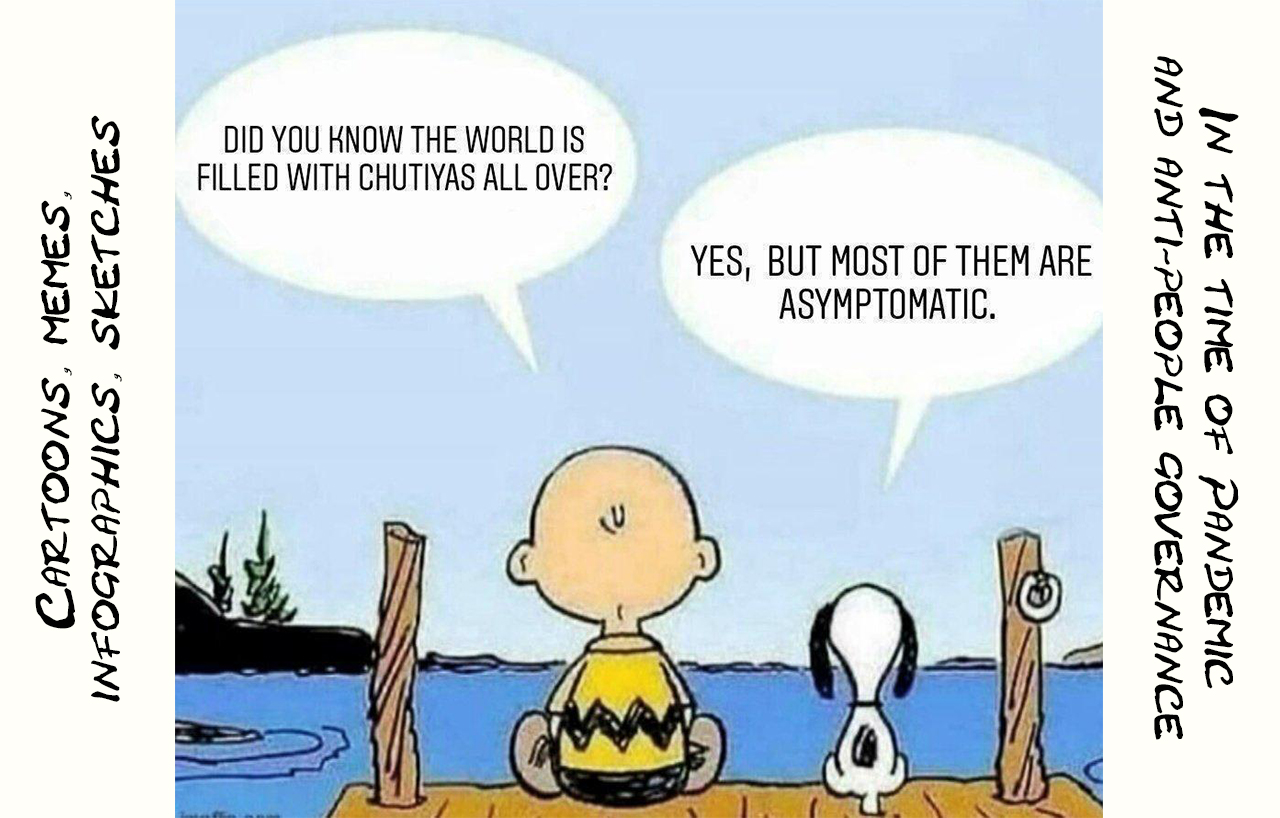
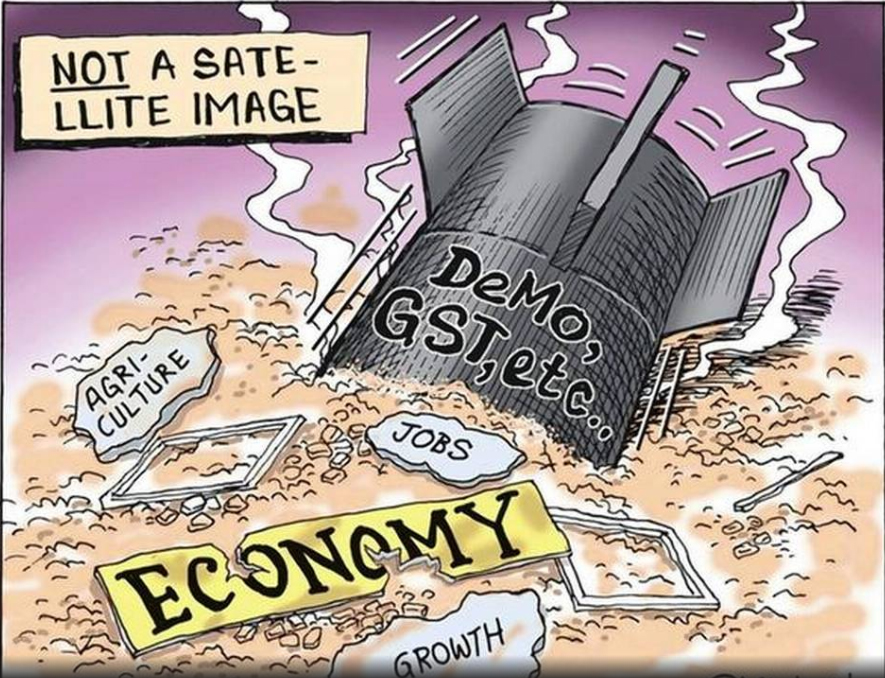
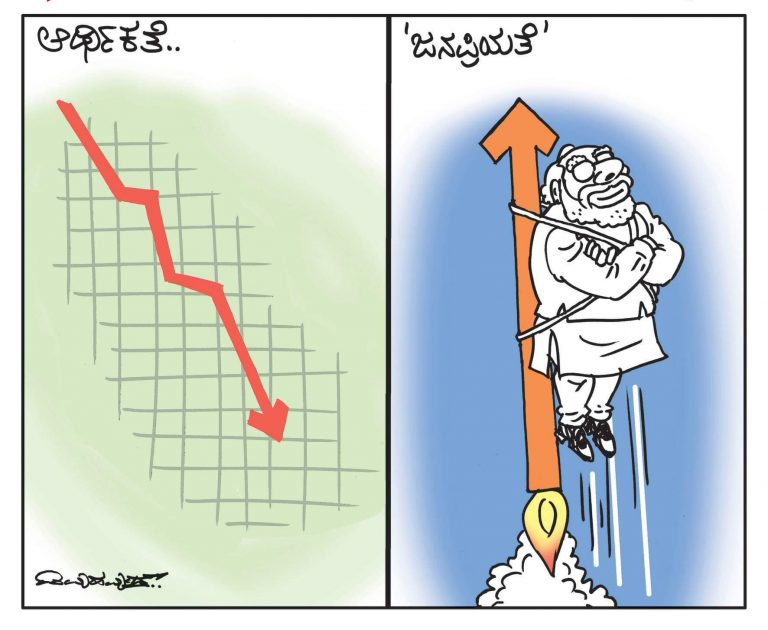
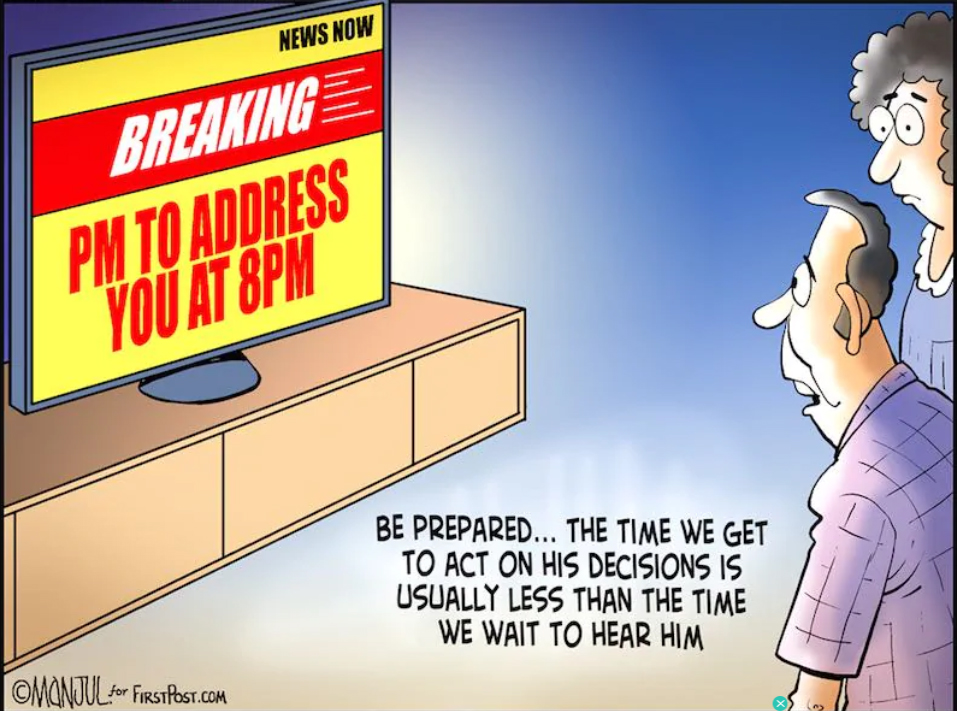
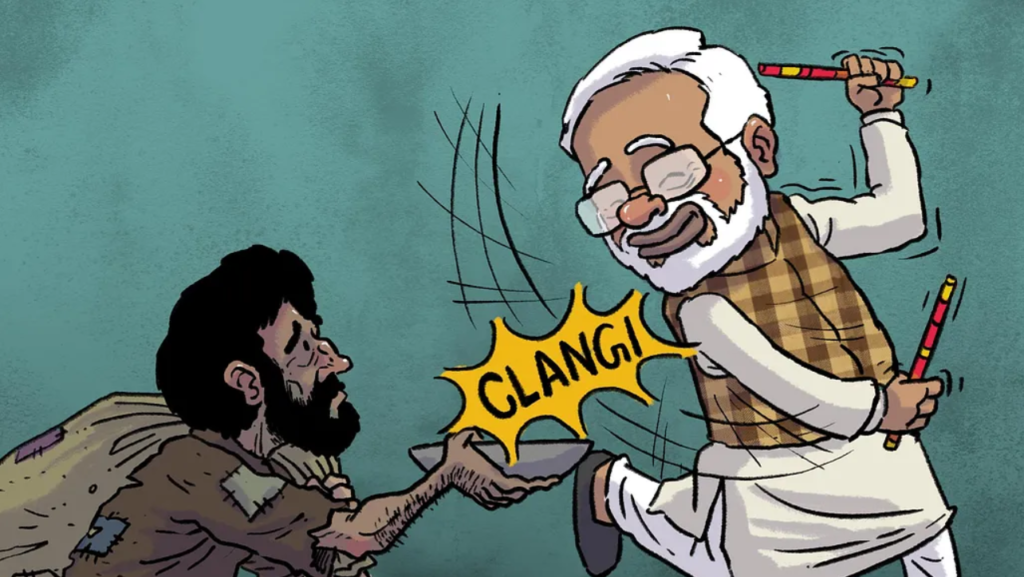
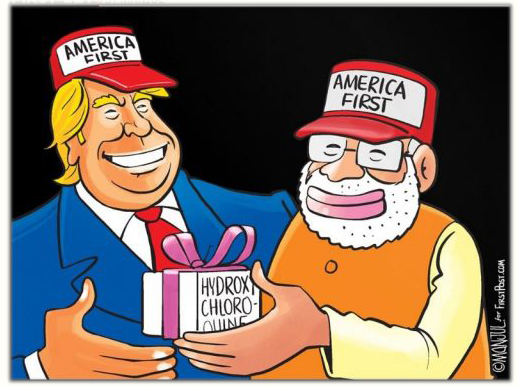

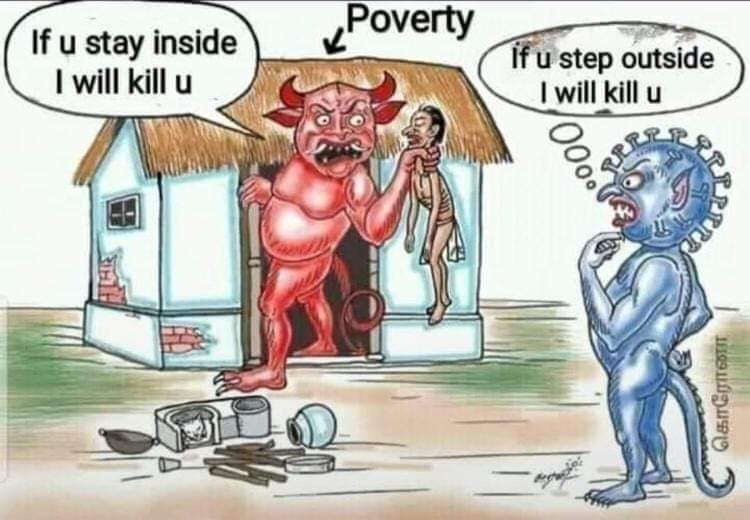
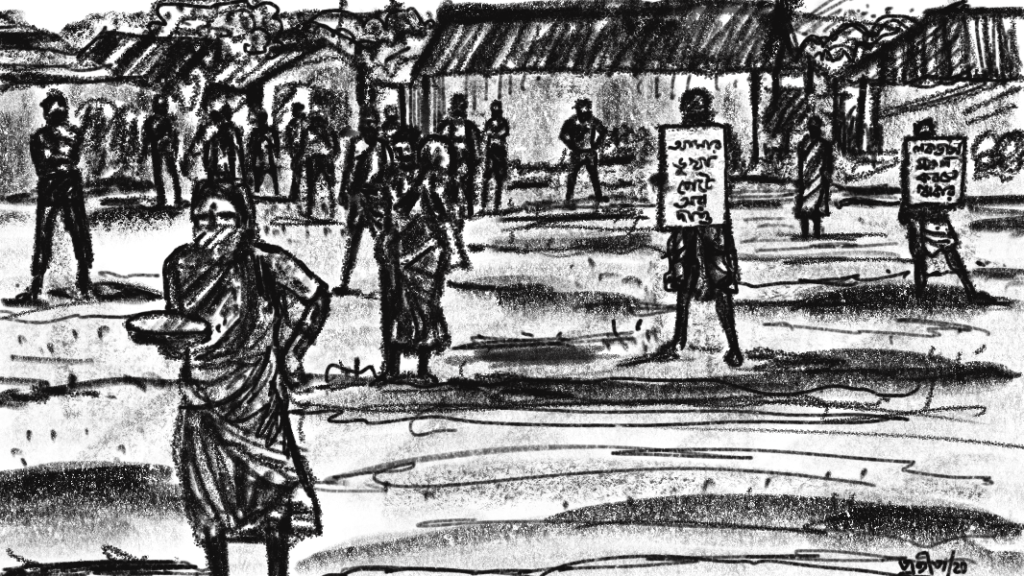
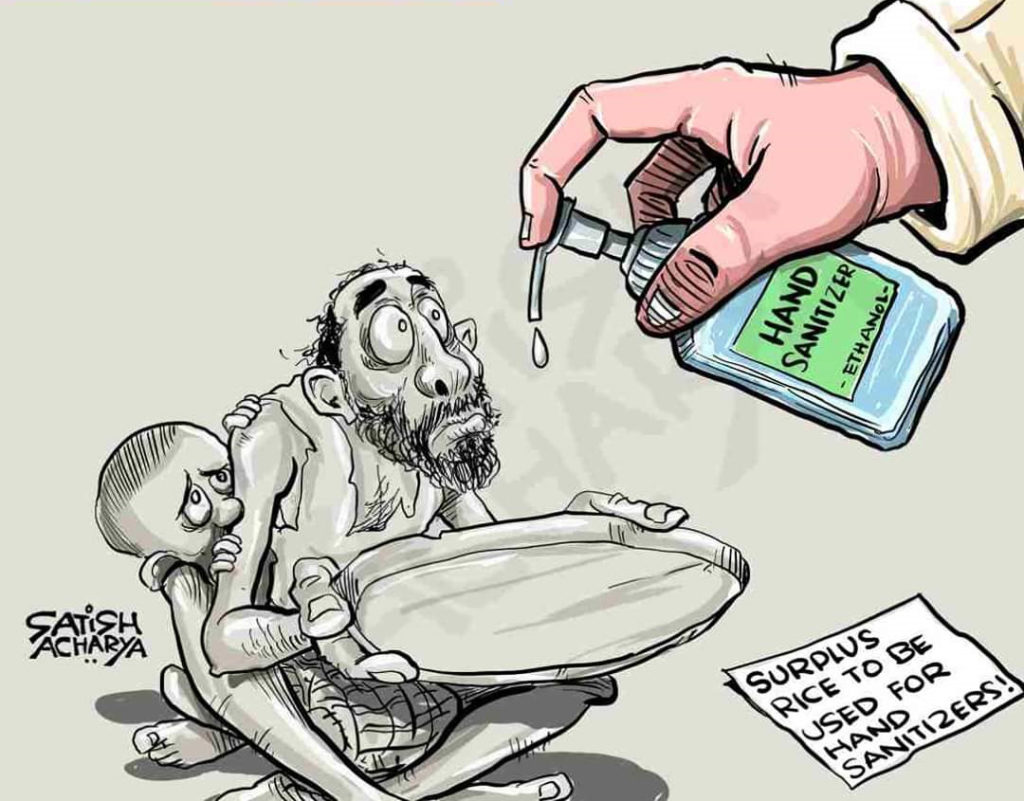
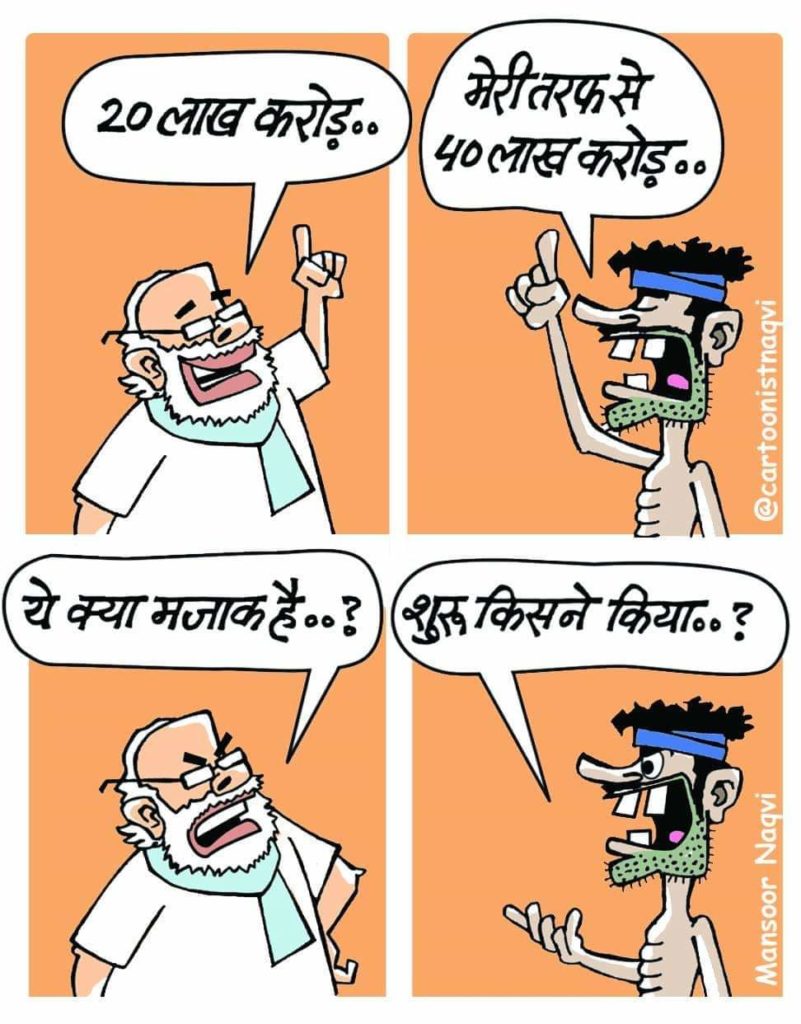
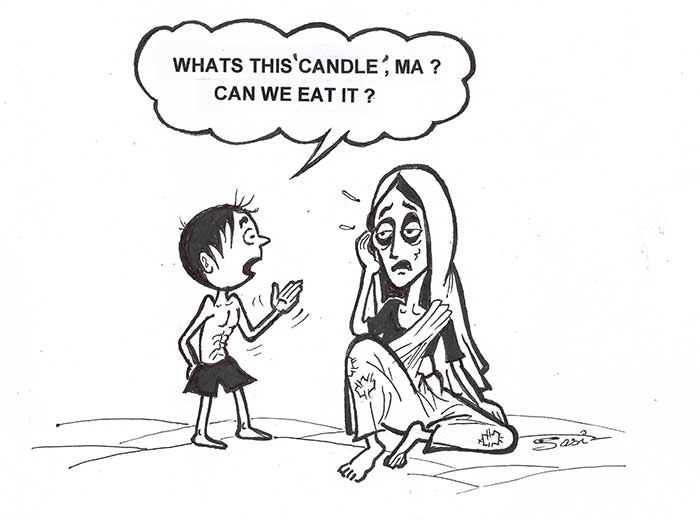
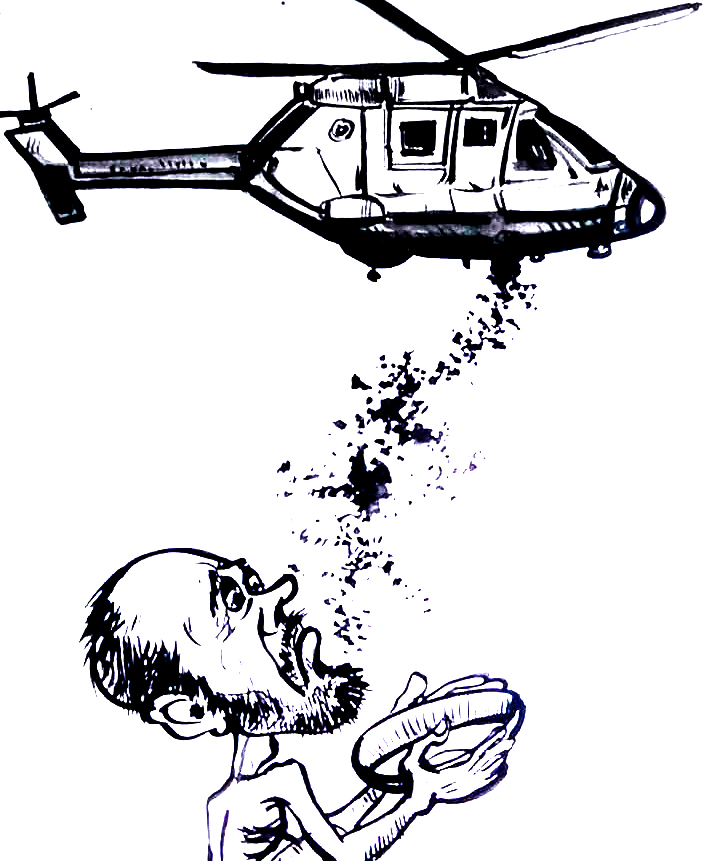
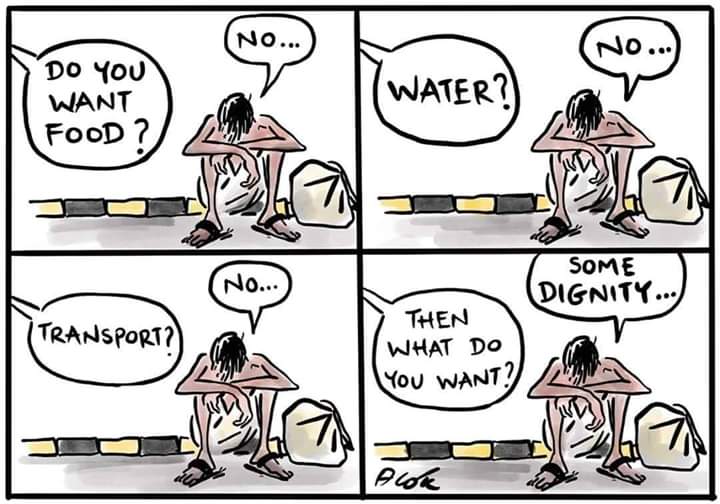
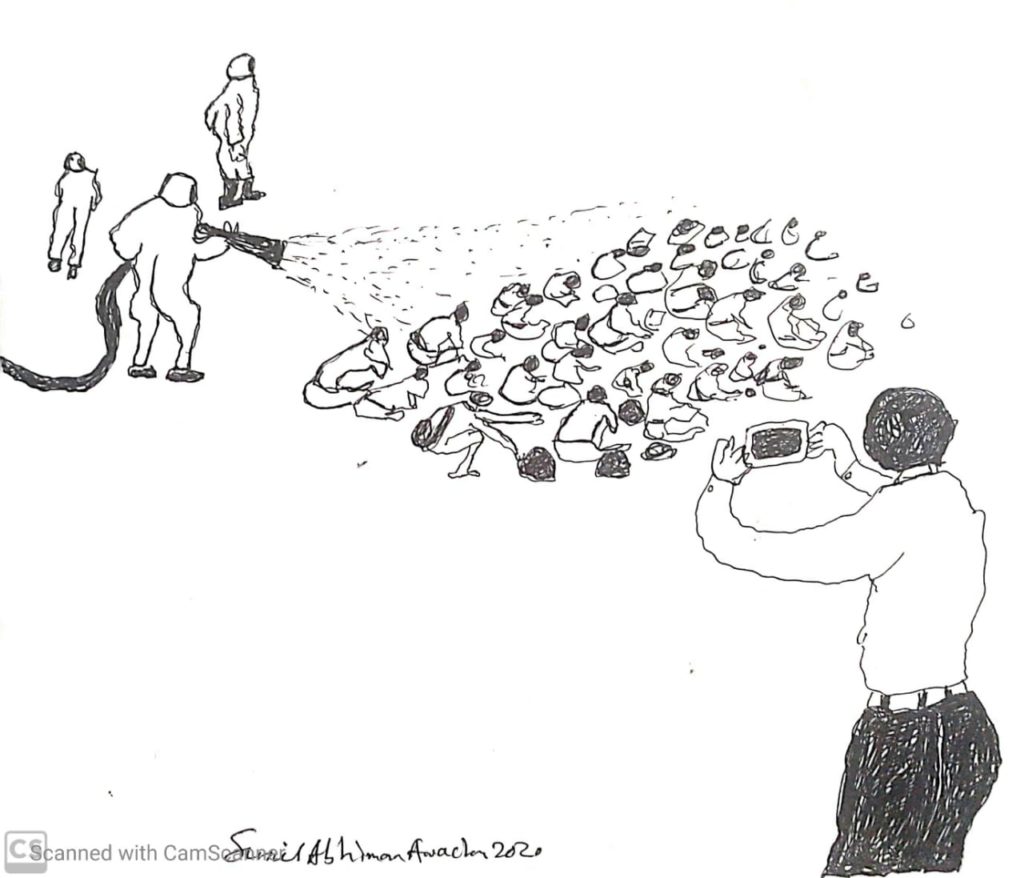
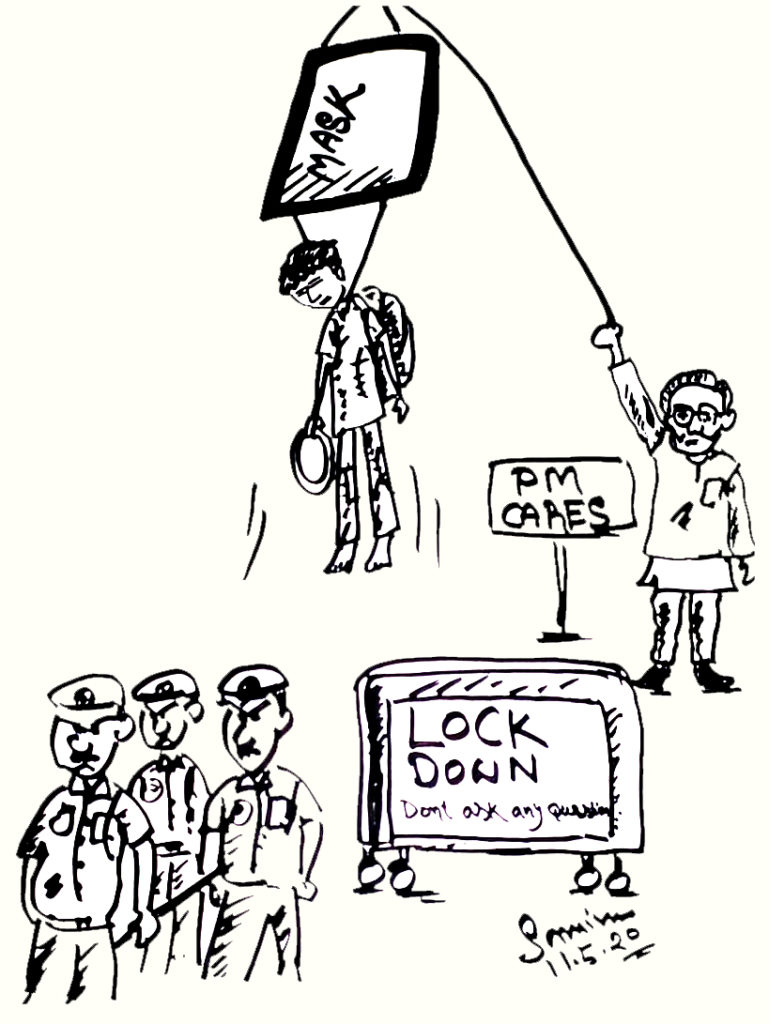
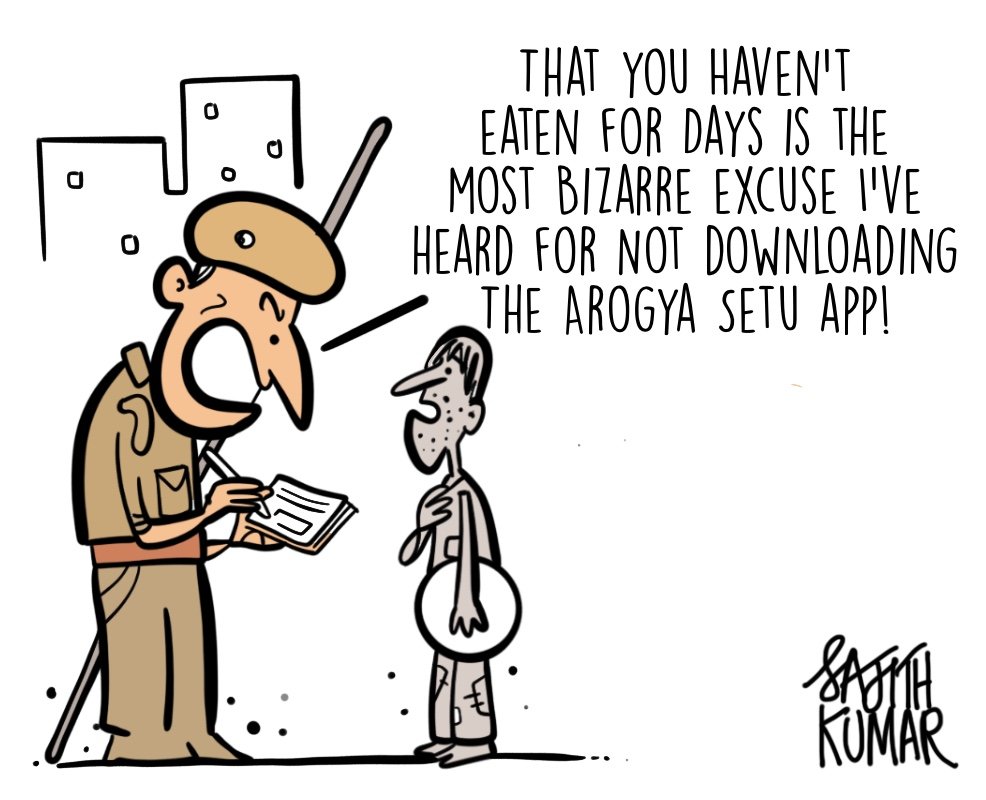
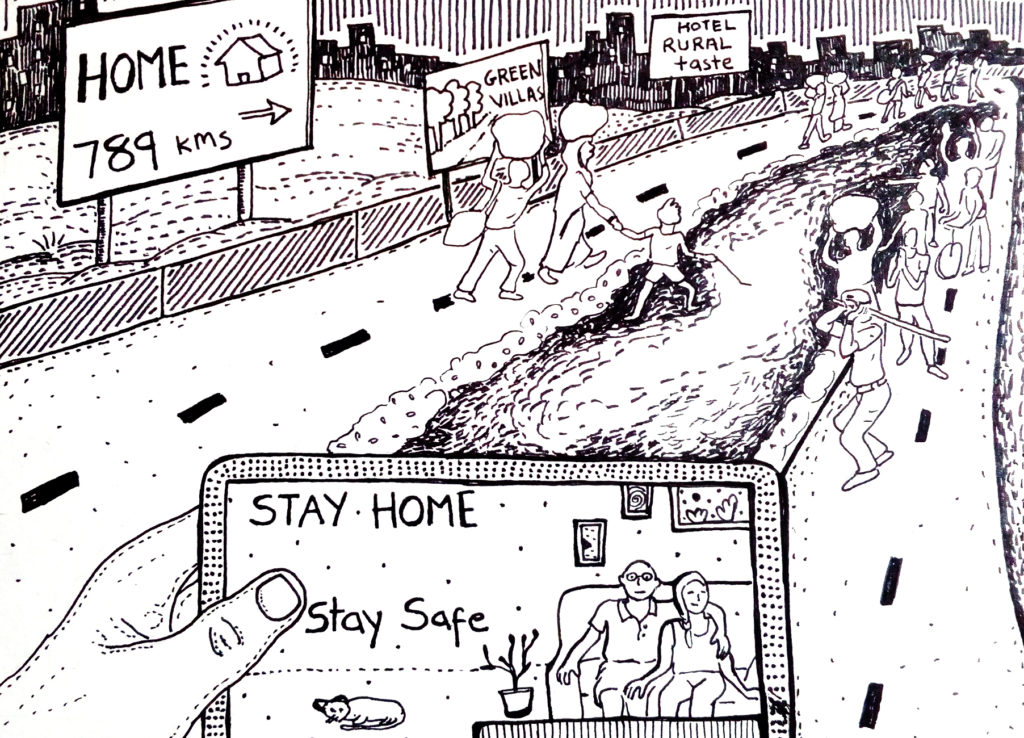
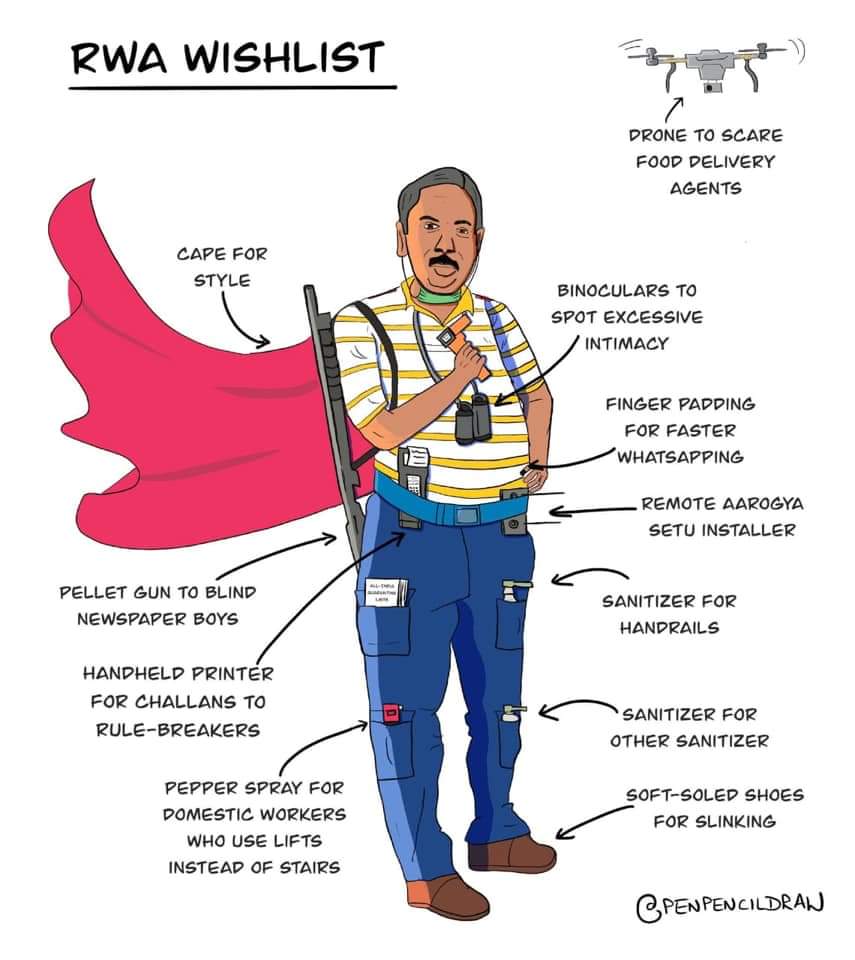
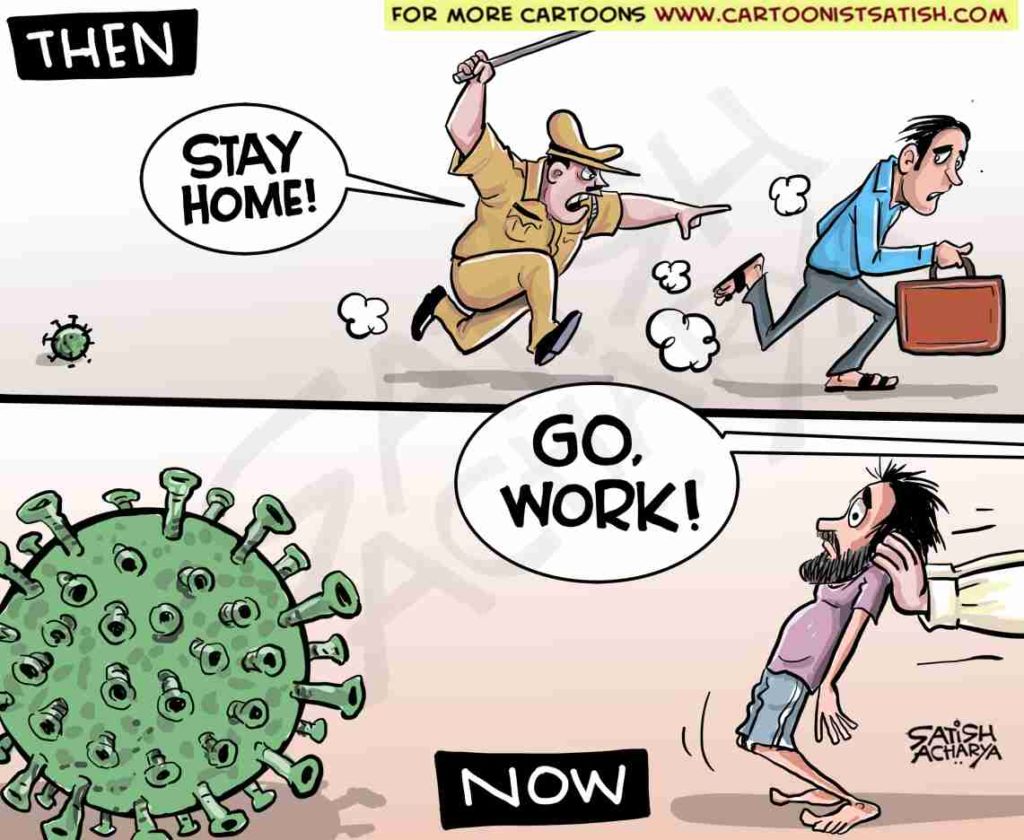
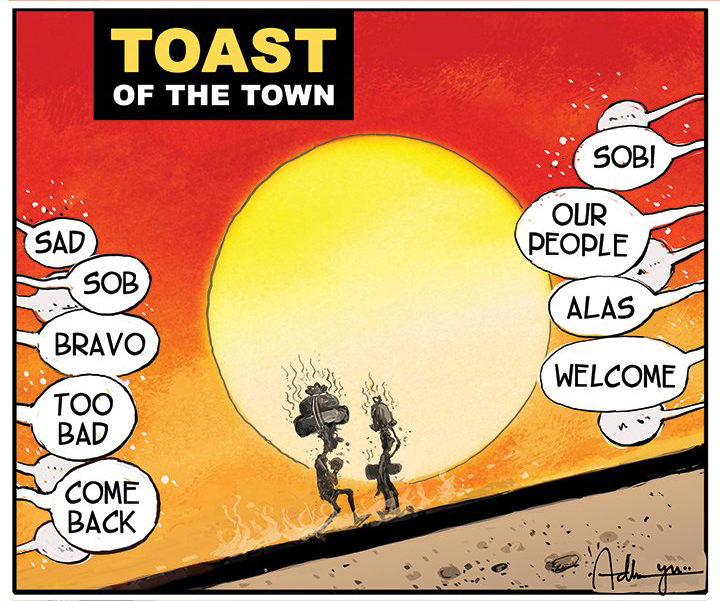
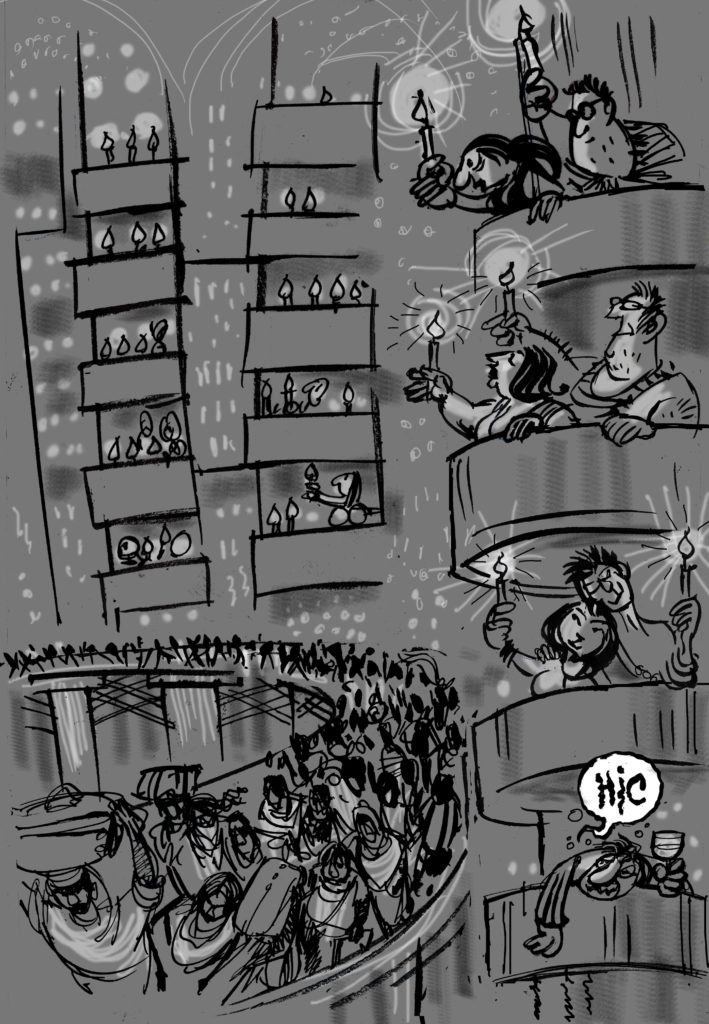
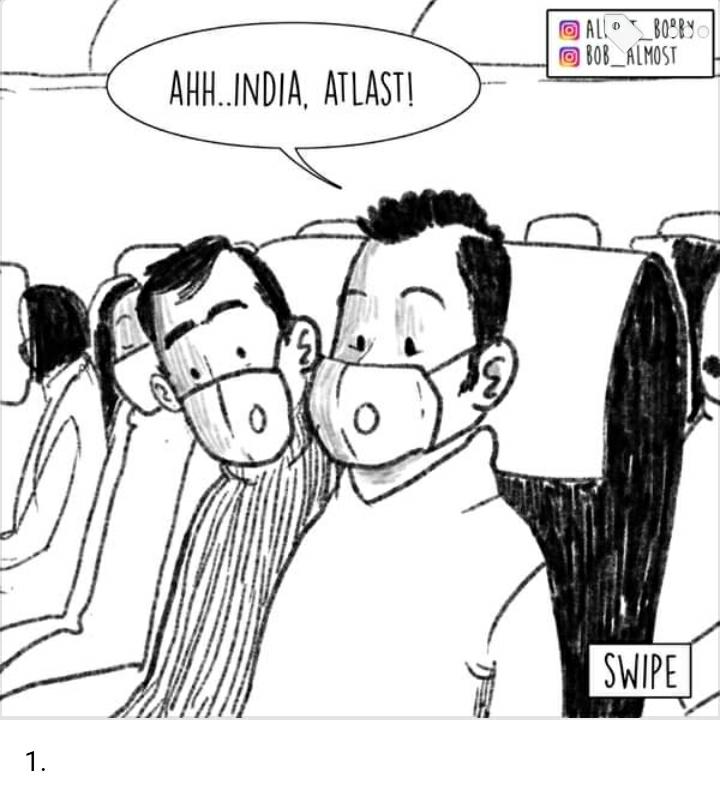
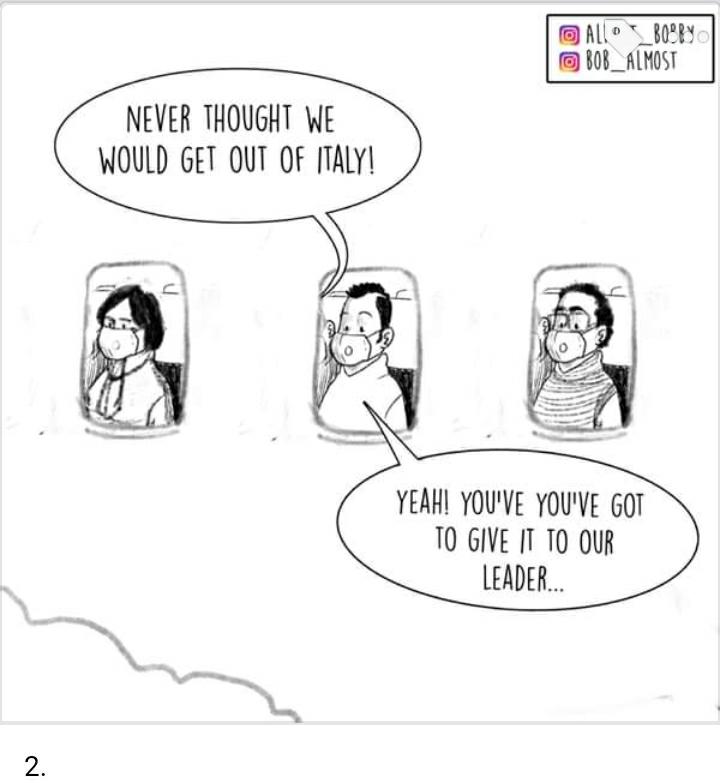
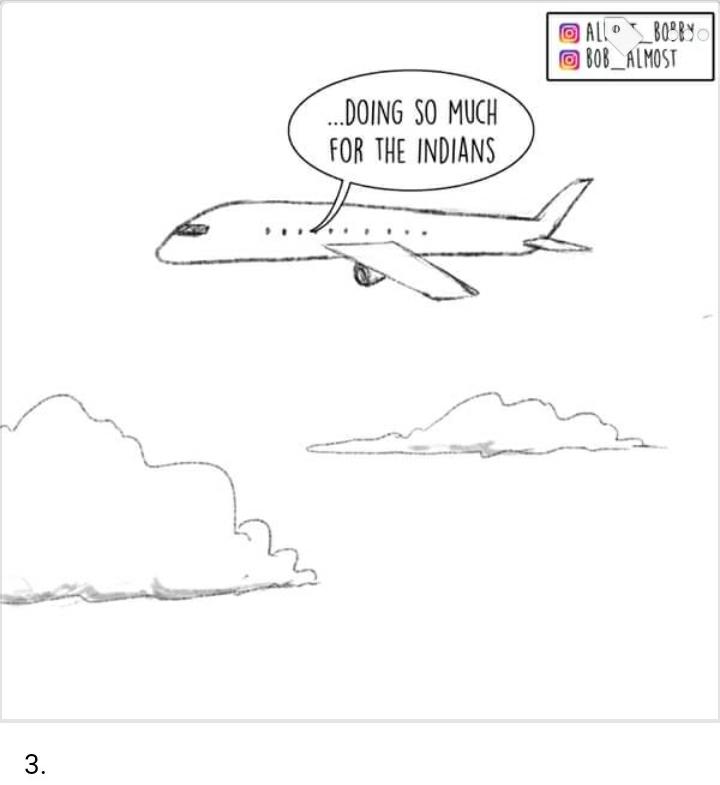
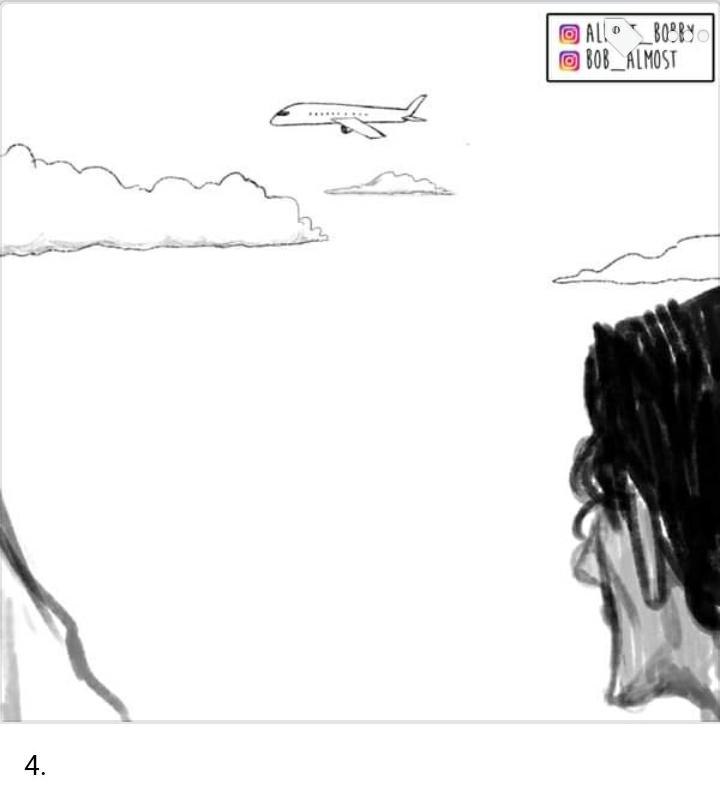
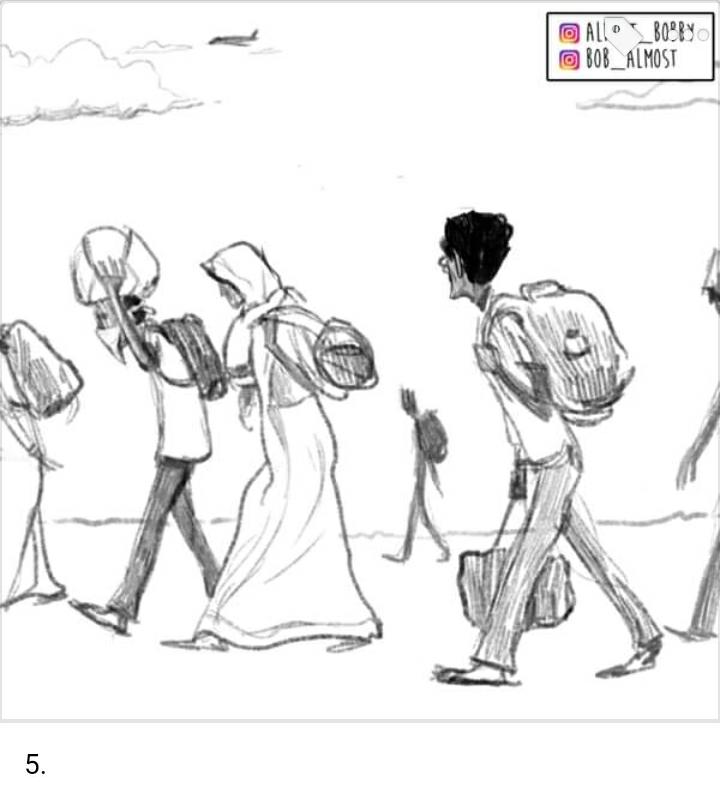
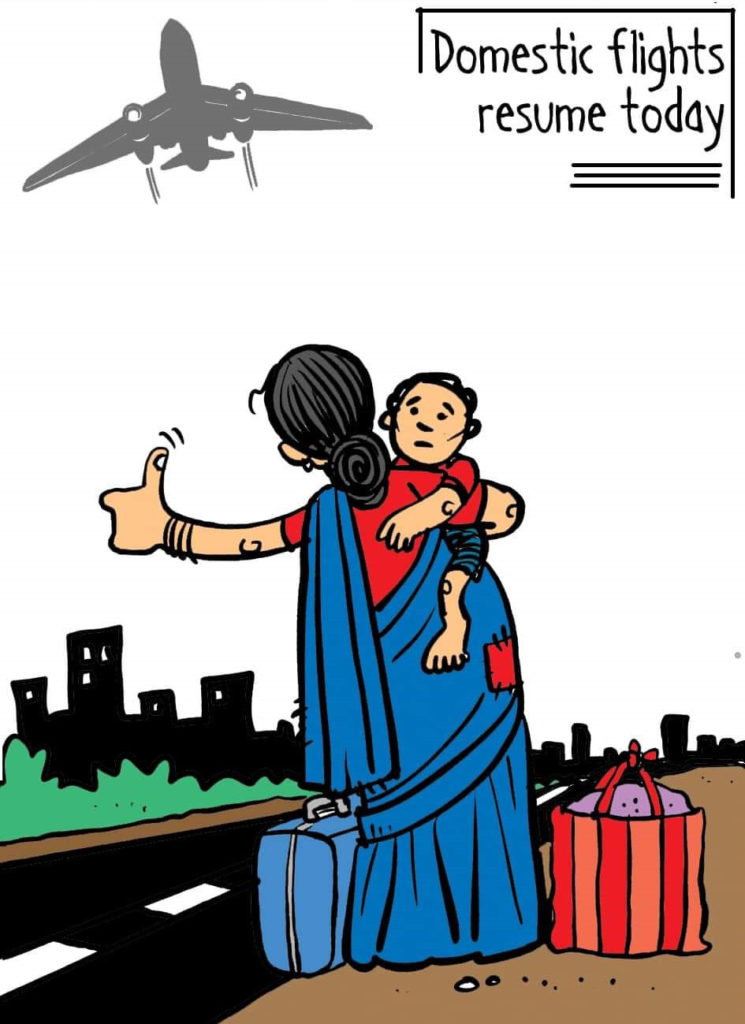
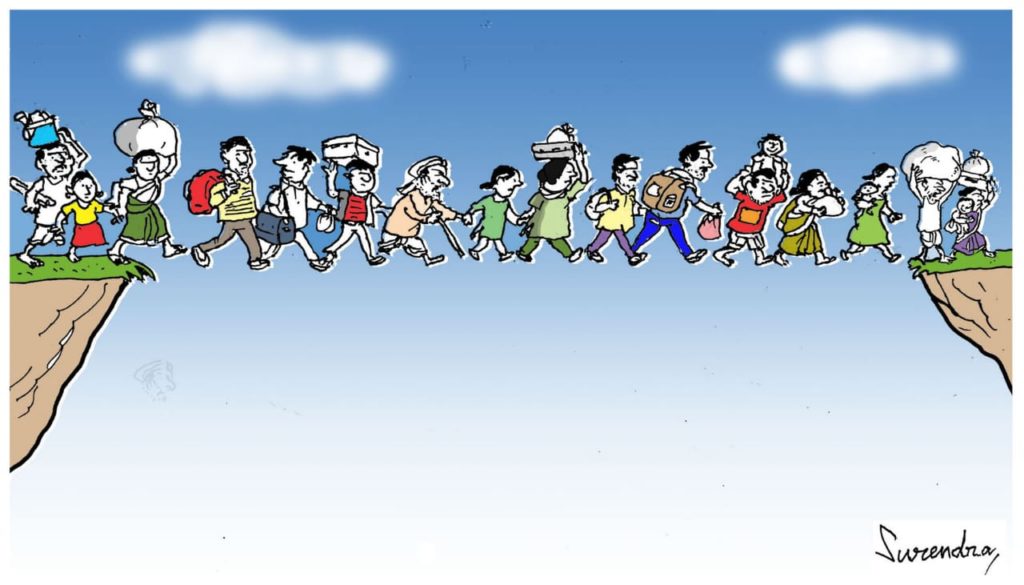
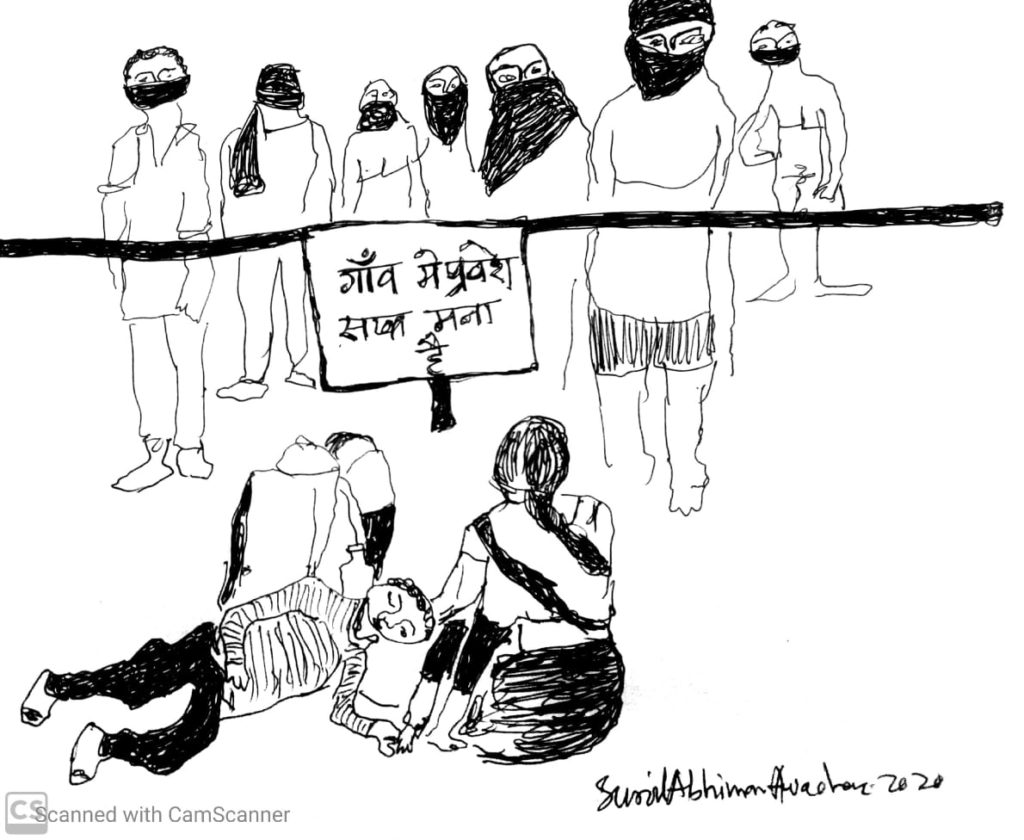
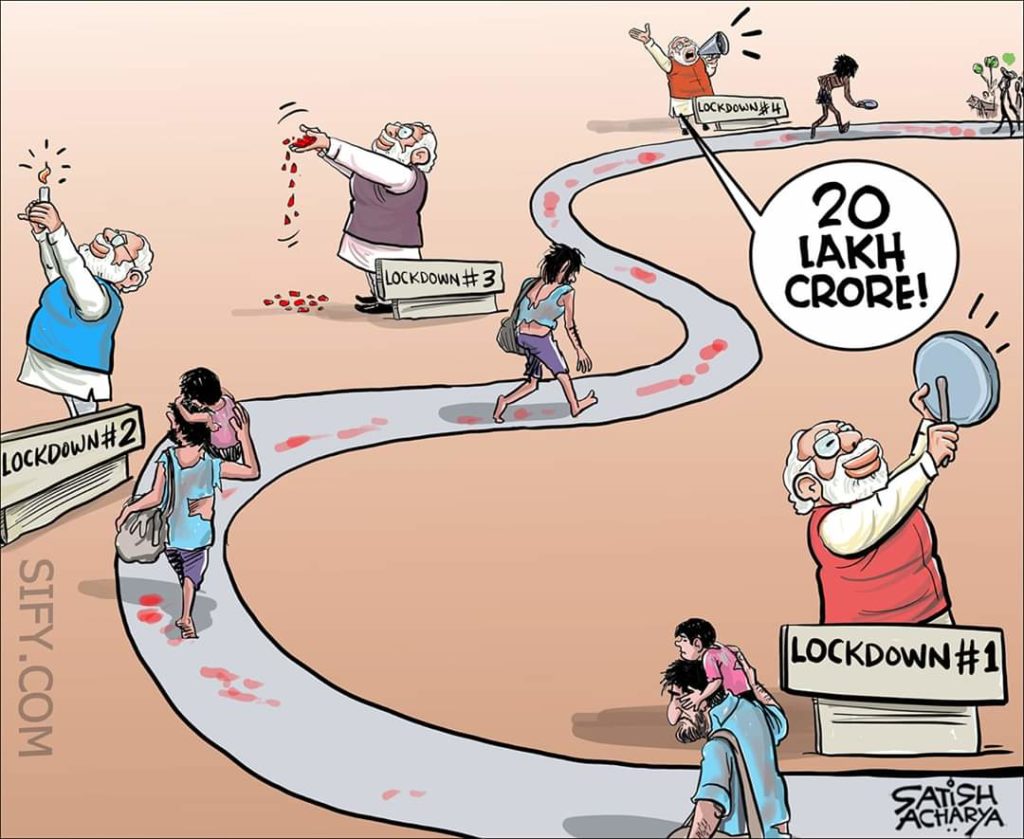
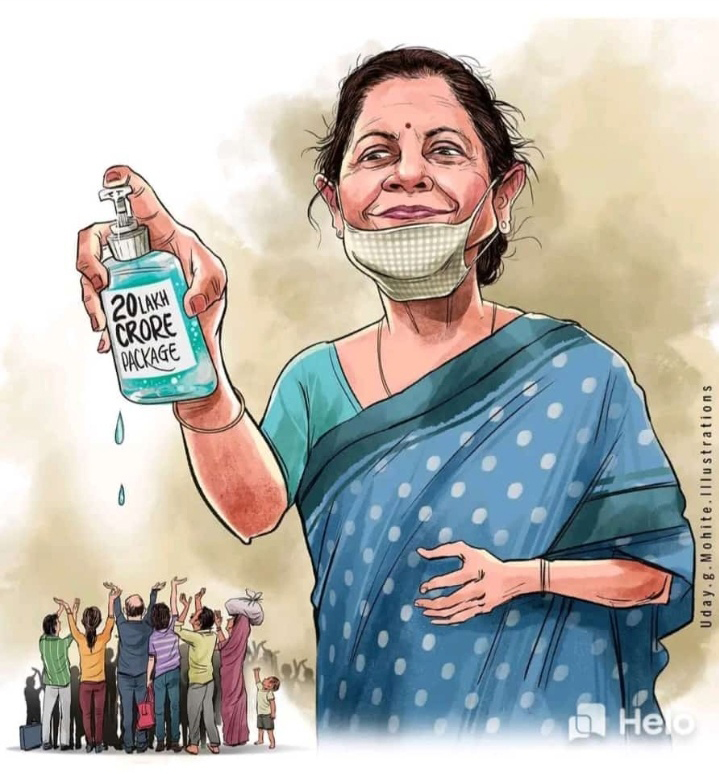

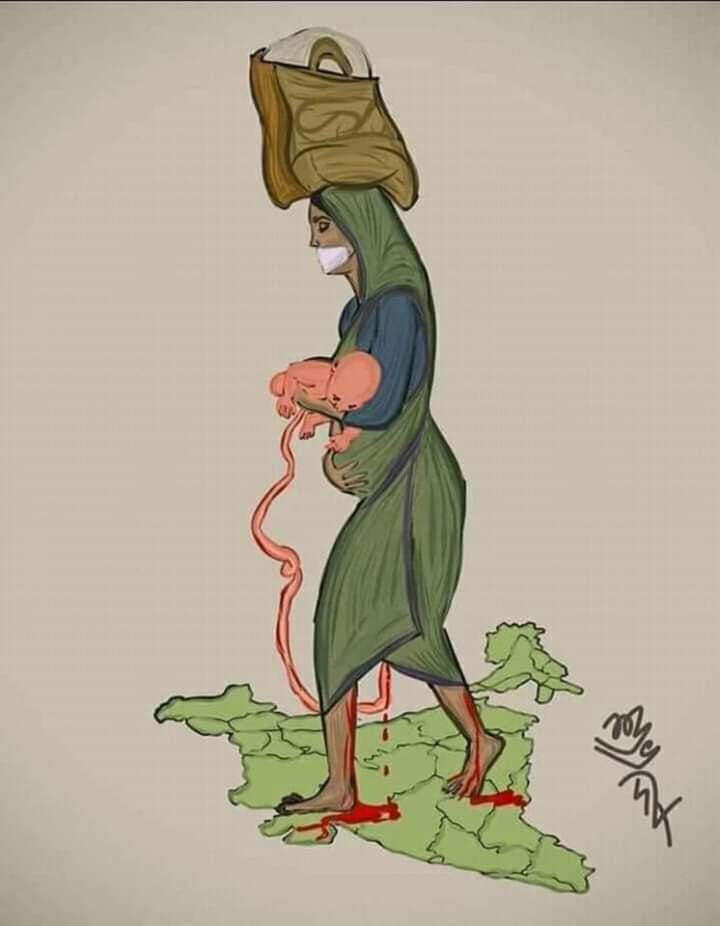
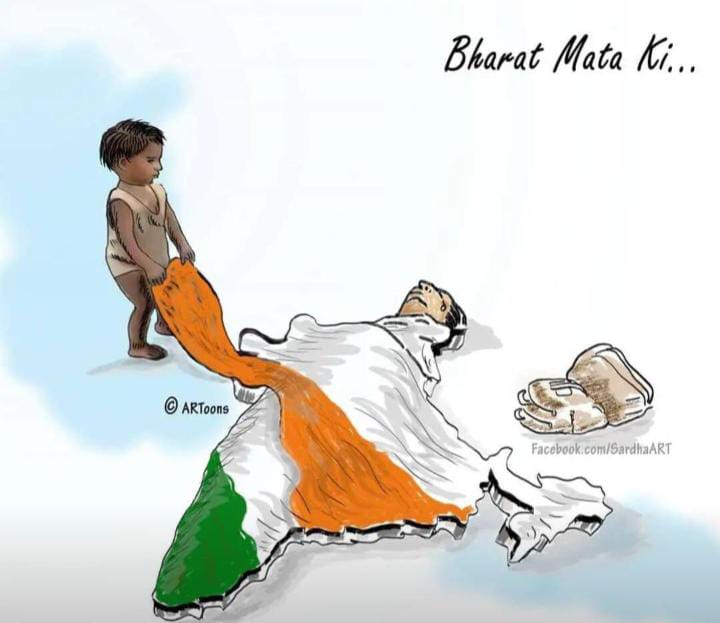
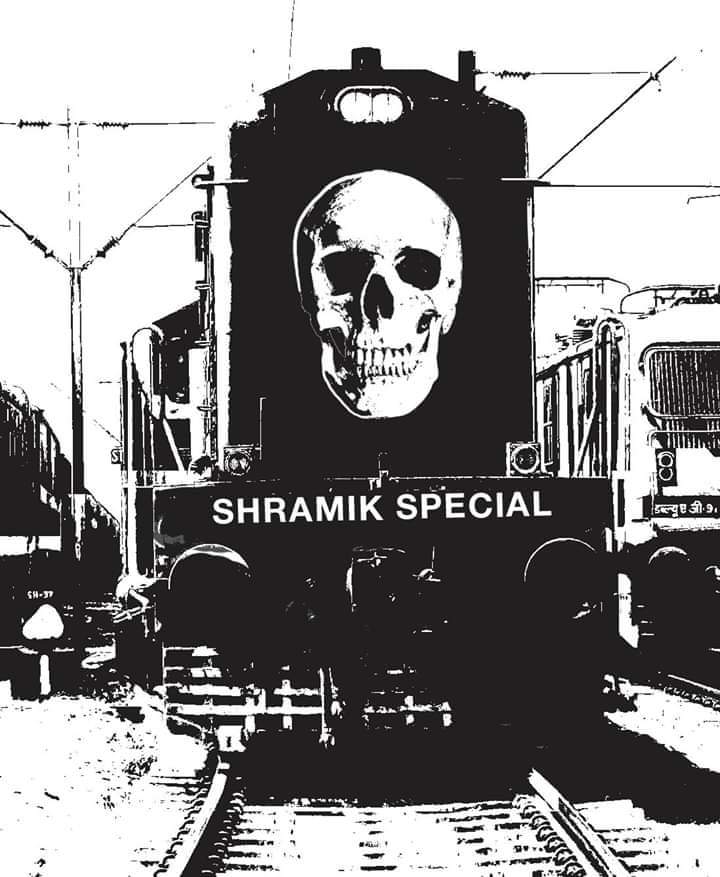

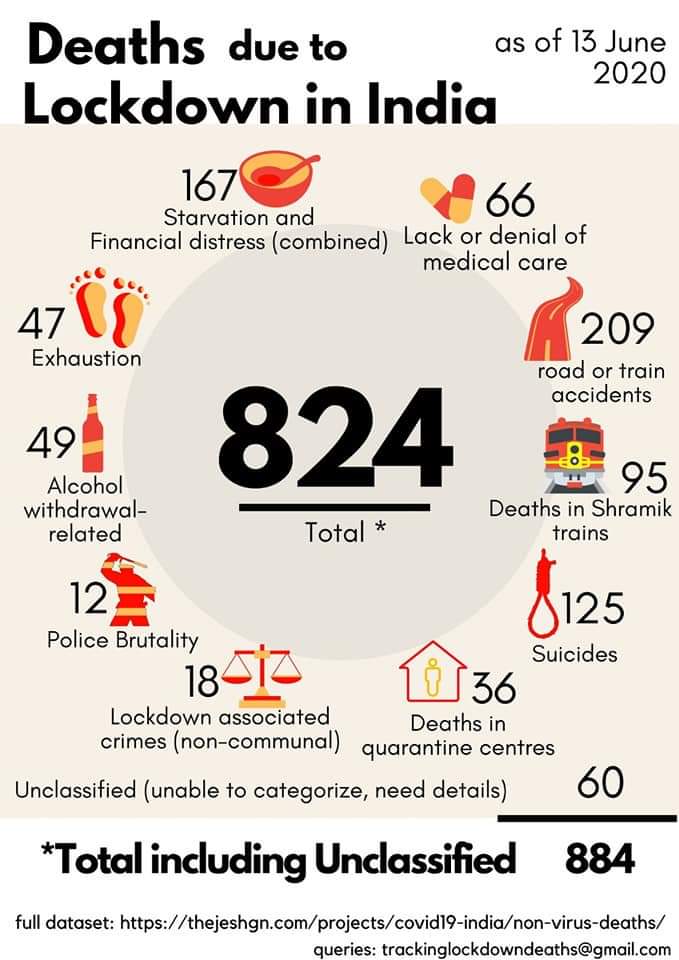

A very comprehensive thought provoking article.